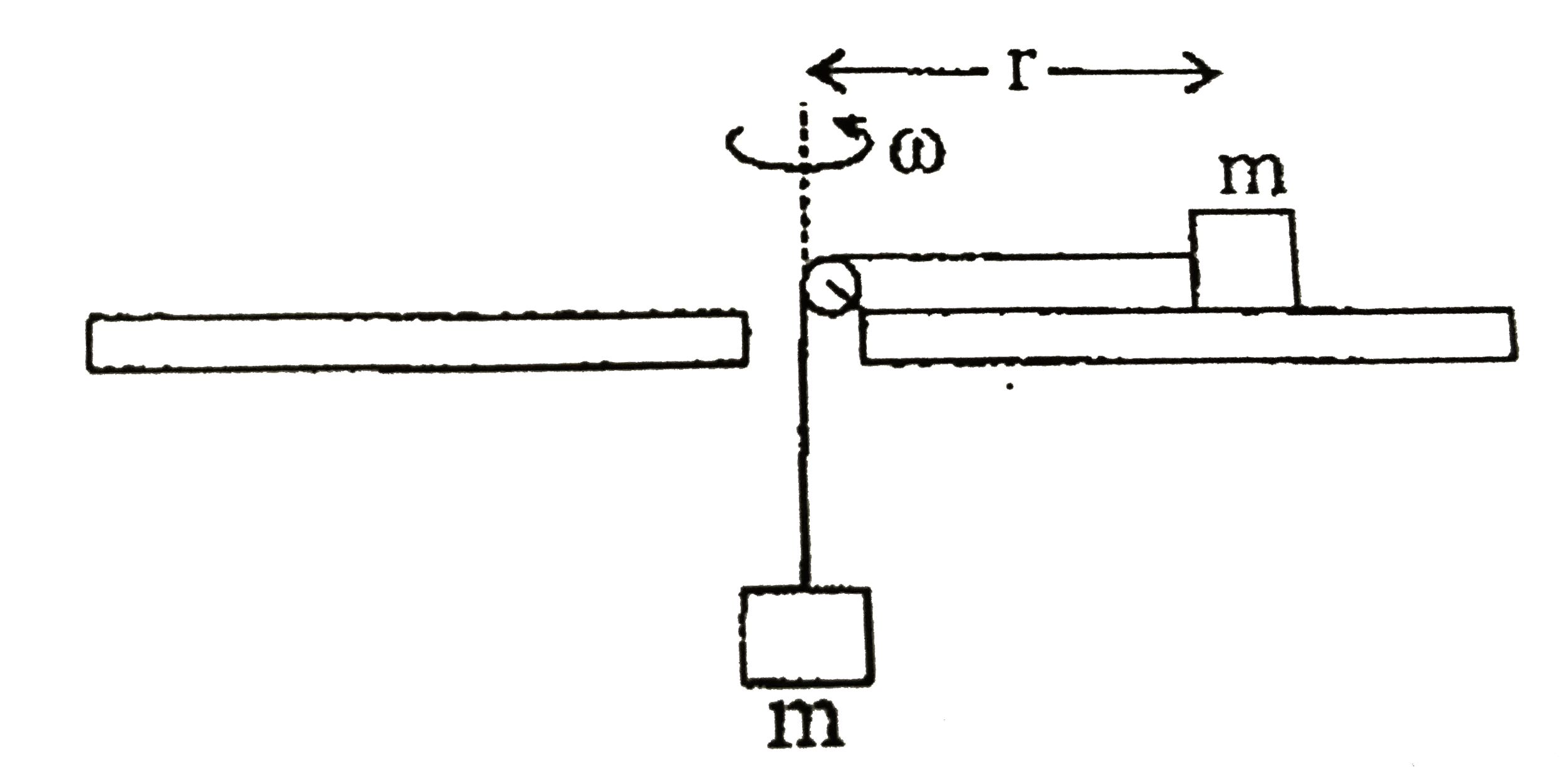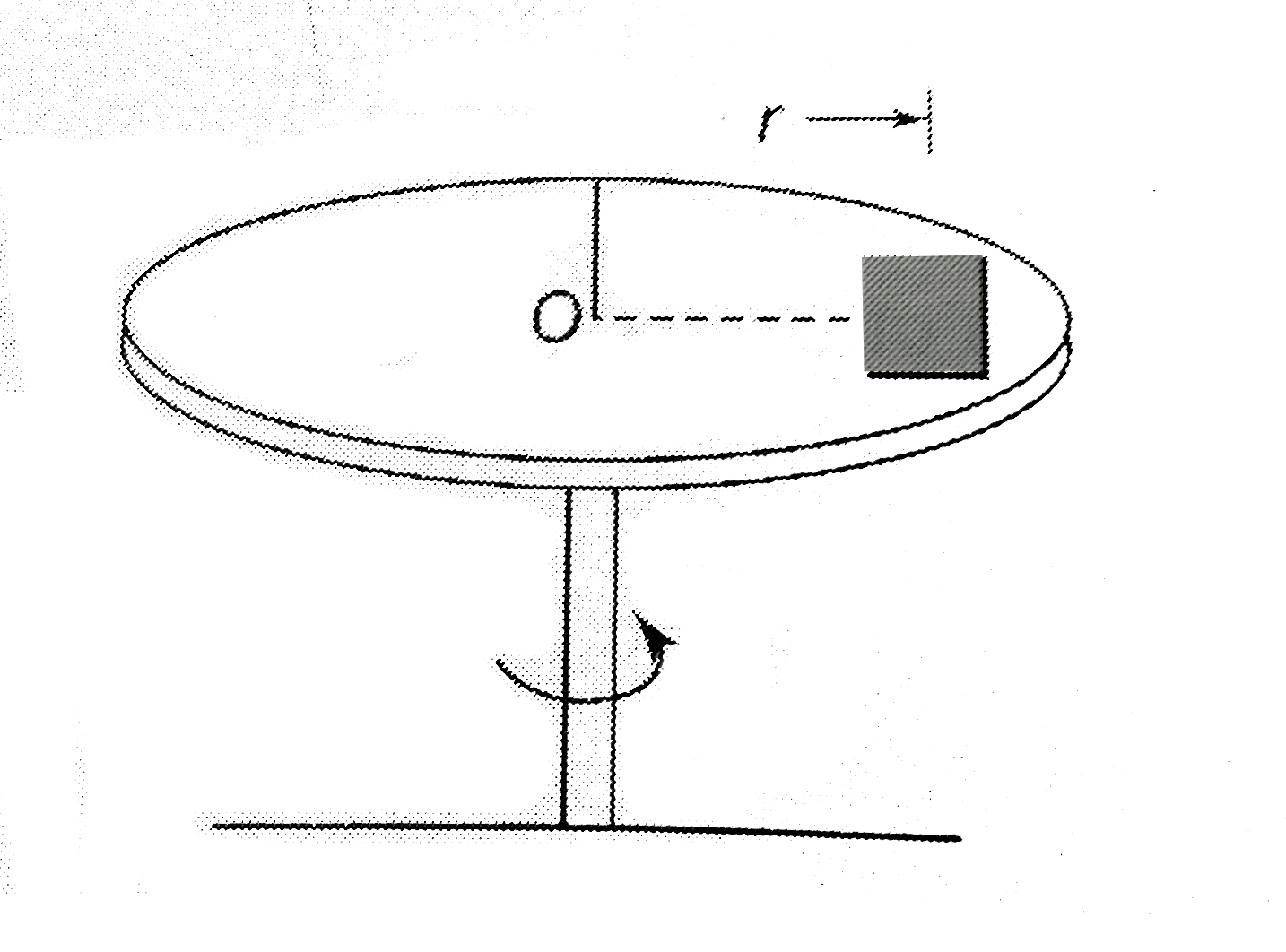A seed is on a turntable rotating at 331/3 rev/min, 6.0 cm from the rotation axis. What are (a) the seed's acceleration and (b) the least coefficient of static friction to avoid slippage? ( c) If the turntable has undergone constant angular acceleration from rest in 0.25 s, what is the least coefficient to avoid slippage?
(a) 0.73m/s2, (b) .075, (c ) 0.11
Topper's Solved these Questions
- BOOK - RESNICK AND HALLIDAYCHAPTER - RIGID BODY DYNAMICS - IEXERCISE - PRACTICE QUESTIONS (SINGLE CORRECT CHOICE TYPE)43videos
RIGID BODY DYNAMICS - I
- BOOK - RESNICK AND HALLIDAYCHAPTER - RIGID BODY DYNAMICS - IEXERCISE - PRACTICE QUESTIONS (MORE THAN ONE CORRECT CHOICE TYPE)7videos
RIGID BODY DYNAMICS - I
- BOOK - RESNICK AND HALLIDAYCHAPTER - RIGID BODY DYNAMICS - IEXERCISE - CHECKPOINT18videos
RIGID BODY DYNAMICS - I
- BOOK - RESNICK AND HALLIDAYCHAPTER - RELATIVITYEXERCISE - PRACTICE QUESTIONS (Integer Type)5videos
RELATIVITY
- BOOK - RESNICK AND HALLIDAYCHAPTER - RIGID BODY DYNAMICS-IIEXERCISE - PRACTICE QUESTIONS (Integer Type)2videos
RIGID BODY DYNAMICS-II
Similar Questions
A small coin is placed on a flat, horizontal turbtable. The turnable is observed to make three revolutions is 3.14 s. (a) What is the speed of the coin when it rides without slipping at a distance of 5.0 cm from the center of the turntable? (b) What is the acceleration (magnitude and direction) of the coin? (c) What are the magnitude and direction of the frictional force acting on the coi if the coin has a mass of 2.0 g? (d) What is the coefficient of static friction between the coin and the turntable if the coin is observed to slide off the turntable when it is more than 10 cm from the center of the turntable?
View SolutionA square plate of mass 120g and edge 5.00 cm rotates about one of the edges. If it has a unifrom angular acceleration of 0.2rads2, what torque acts on the plate?
View Solution
Knowledge Check
- Question 1 - Select One
A coin is placed on the horizontal surface of a rotation disc. The distance of the coin from the axis is 1 m and coefficient of friction is 0.5. If the disc starts from rest and is given an angular acceleration 1√2 rad /sec2, the number of revolutions through which the disc turns before the coin slips is
A4πB74πC54πD34π - Question 2 - Select One
The coefficient of friction between a car wheels and a roadway is 0.5 The least distance in which the car can accelerate from rest to a speed of 72 kmph is (g=10ms−2)
A10mB20mC30mD40m - Question 3 - Select One
The coefficient of static friction between a small coin and the surface of a turntable is 0.30 . The turntable rotates at 2rads−1. What is maximum distance from the centre of the turntable at which the coin will not slide ?
A7.5 mB1.5 mC0.15 mD0.75 m
Two equal masses m are attached by a string. One mass lies at radial distance r from the centre of a horizontal turntable which rotates with constant angular velocity ω=2 rad s(1), while the second hangs from the string inside the tumtable's hollow spindle (see fig.) The coefficient of static friction between the turntable and the mass lying on it is μs=0.5. The maximum and minimum values of radius such that the mass lying on the turntable does not slide are rmax+rmin in meter is
 View Solution
View SolutionWhen a small 2.0 g coin is placed at a radius of 5.0 cm on a horizontal turntable that makes three full revolution is in 3.14s, the coin does not slip. What are (a) the coin's speed, the (b) magnitude and (c) direction (radially inward or outward) of the coin's acceleration, and the (d) magnitude and (e) direction(inward or outward) of the frictional force on the coin? The coin is on the verge of slipping if it is placed at a radius of 10 cm. (f) What is the coefficient of static friction between coin and turntable?
View SolutionA wheel starting from rest via rotating with a constant angular velocity of 3 rad s−1. What is its angular acceleration after 4 s?
View SolutionA flywheel with a diameter of 1.20 m is rotating at an angular speed of 200 rev/min. (a) What is the angular speed of the flywheel in radians per second? (b) What is the linear speed of a point on the rim of the flywheel? ( c) What constant angular acceleration (in revolutions per minute-squared) will increase the wheel's angular speed to 1000 rev/min in 60.0 s? (d) How many revolutions does the wheel make during that 60.0 s?
View SolutionA body Is placed on a turntable. The friction coefficient between the body and the table is μ.
(a) If turntable rotates at constant angular speed ω, find the maximum value of ω for which the block will not slip.
(b) if the angular speed is increased uniformly from rest with an angular acceleration α, at what speed will the block slip?
 View Solution
View Solution

